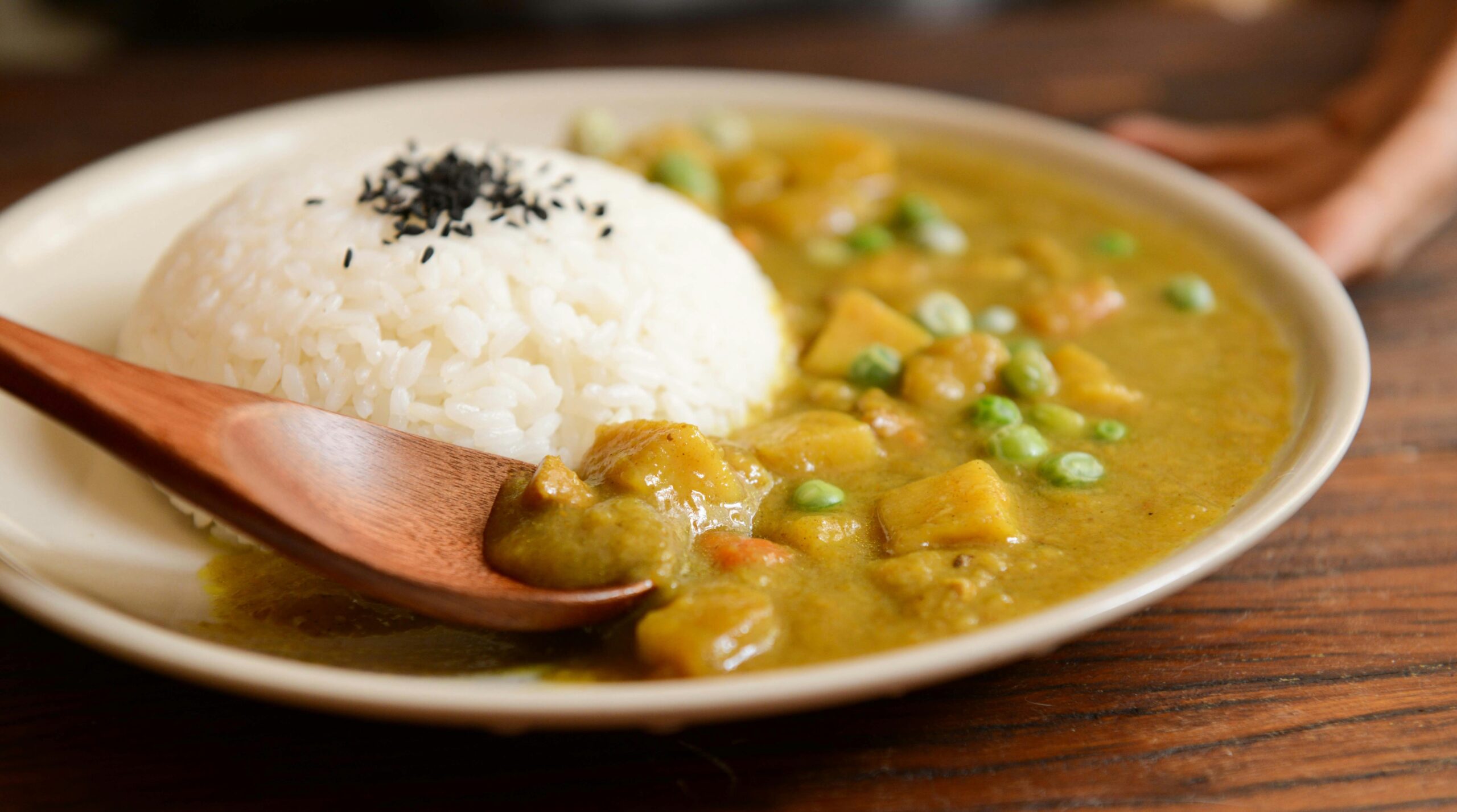A popular food format in India is a sauce, similar in consistency to stew, served with rice or flatbreads. These sauces are made with various combinations of spices: some have more paprika, others have more turmeric, but they all have a bright flavor. In the 17th century, India was under British administration, and the British were very fond of the idea of mixing spices. To simplify, they grouped all dishes of this type — sauces and stews — under one name “curry.” Two centuries later, curry made its way to Japan with British sailors (stew with rice was easy to prepare and added variety to the sailors’ scant diet), where it was assimilated, sometimes losing its spiciness and adding apples and potatoes to the list of ingredients. Now Japanese curry is a very comforting food that is easy to prepare and fun to modify, and it can be served with either rice or noodles: perfect for family dinners!
Details:
- It’s more convenient to cook the dish in a pot or a deep skillet.
- To make it a curry, you’ll need spices. A simple option is to buy a ready-made spice blend from an Asian store, from which you can easily break off the required amount. There are different spiciness levels of curry: from mild for kids to extremely spicy. If you couldn’t find such a spice blend, assembling the seasoning yourself is easy. For 4 servings, you’ll need 2 generous tablespoons of curry powder, a teaspoon of paprika, and a teaspoon of flour (it’s needed to thicken the sauce; you can use any starch instead of flour).
- If you’re not fasting, try cooking chicken tonkatsu as well. For this, you’ll need thinly sliced chicken breast, flour, eggs, and Japanese breadcrumbs. Add salt to the flour, coat the fillet with it, dip it in beaten eggs, and coat it with breadcrumbs on all sides. Fry in a large amount of oil until golden brown. This method can also be used for pork and shrimp, as well as tofu and some vegetables.
- Another non-fasting option is to make curry with meat. For this, add meat and fry it when you have already fried onions and carrots.
- For the recipe, you’ll need short-grain rice. Sushi rice is suitable; the freshest one can be found in Asian grocery stores. Most likely, it’s also available at your local store. To prevent the rice from losing its shape, you need to add some acidity to it. Ideally, if you have rice vinegar on hand, apple or just lemon juice will also work.
- It’s often recommended to cook rice in a ratio of 1:2 with water, but we’ll take a little less water: this way, it definitely won’t get mushy and will remain firm.
- Oranges in the ingredient list are needed for a pleasant tanginess. Perhaps you won’t see them in classic curry, but they fit well here. The apple also adds freshness and a pleasant texture; the best fit would be crisp apples with a touch of acidity, such as Granny Smith.
- It’s best to accompany rice with curry with light beer, but green tea is also a worthy companion.
Ingredients for four servings:
- Rice — 1 cup;
- Salt — 1 teaspoon for rice and ½ teaspoon for curry;
- Sugar — ½ teaspoon;
- Rice vinegar — 1 tablespoon;
- Potatoes — 2-3 small or 1 large potato;
- Carrot — 1 medium;
- Onion — 1 small onion;
- Orange — 1 piece;
- Tomato paste — 1 teaspoon;
- Apple — ½ Granny Smith apple;
- Curry seasoning — ½ block;
- Vegetable oil — for frying;
- Salt — to taste;
- Soy sauce — to taste.
How to cook:
- First, let’s start cooking the rice. Put it in a pot, pour in tap water, and stir well, then drain the water. You need to repeat this two more times. Rinsing the rice helps to remove excess starch and keep the grains firm.
- Pour boiling water over the rice; for 1 cup of rice, use 1.5 cups of water. Add salt, sugar, and rice vinegar. Stir lightly and cover with a lid. Don’t close it all the way!
- Place the rice over high heat. It takes 3 minutes on high heat, 7 minutes on medium heat, and 2 minutes on low heat to cook. After that, remove the rice from the heat and let it sit for 12 minutes. Then you can remove the lid and gently stir the rice.
- While the rice is cooking, let’s prepare the curry. Heat a skillet with oil over medium heat. Finely chop the onion and sauté it until soft. Grate the carrot, add it to the onion, and sauté lightly.
- Pour 2 cups of hot water over the vegetables, add ½ teaspoon of salt.
- Cut the potato into small cubes and add it to the onion and carrot to cook over low heat. Add the remaining ingredients when the potatoes are almost cooked — almost to the point of being al dente.
- While the potatoes are cooking, peel and finely chop the orange and apple. The size of the apple pieces depends on the effect you want to achieve: cut them into the same pieces as the potatoes if you want the curry to have an interesting texture, or dice them into 2-3 mm cubes to leave only the freshness of the apple.
- It’s time for the curry seasoning. Break it into small pieces and add it to the vegetables, mix well. Add tomato paste, orange, and apple, mix well again. If you’re using curry powder, at this point, you need to sift a teaspoon of flour or starch into the dish to thicken the sauce.
- Taste the sauce and add salt if necessary. If you want more richness, you can add a little soy sauce.
- Leave the curry on the lowest heat for 5-10 minutes for the potatoes to cook through and the apples to soak up the spices.
- Serve the curry with rice.





